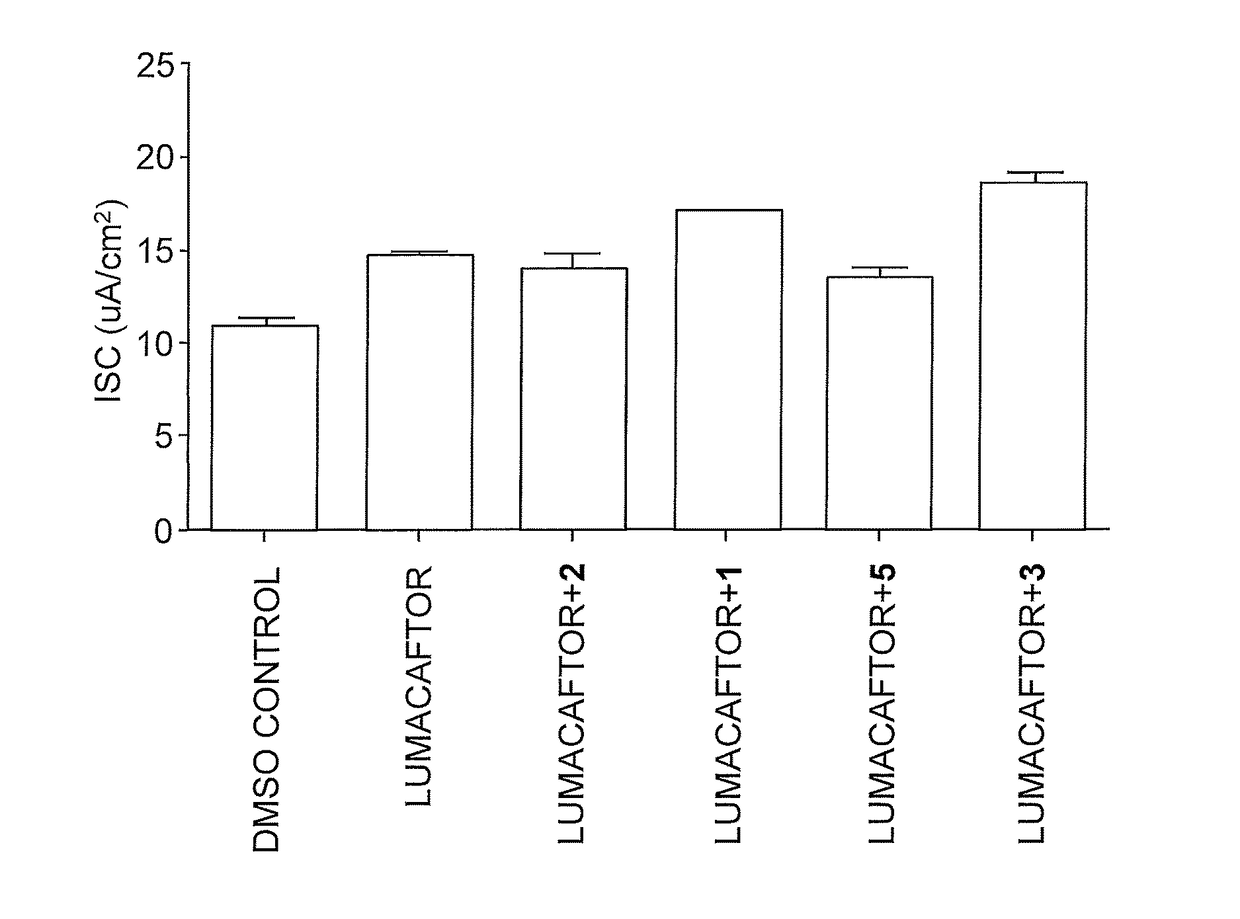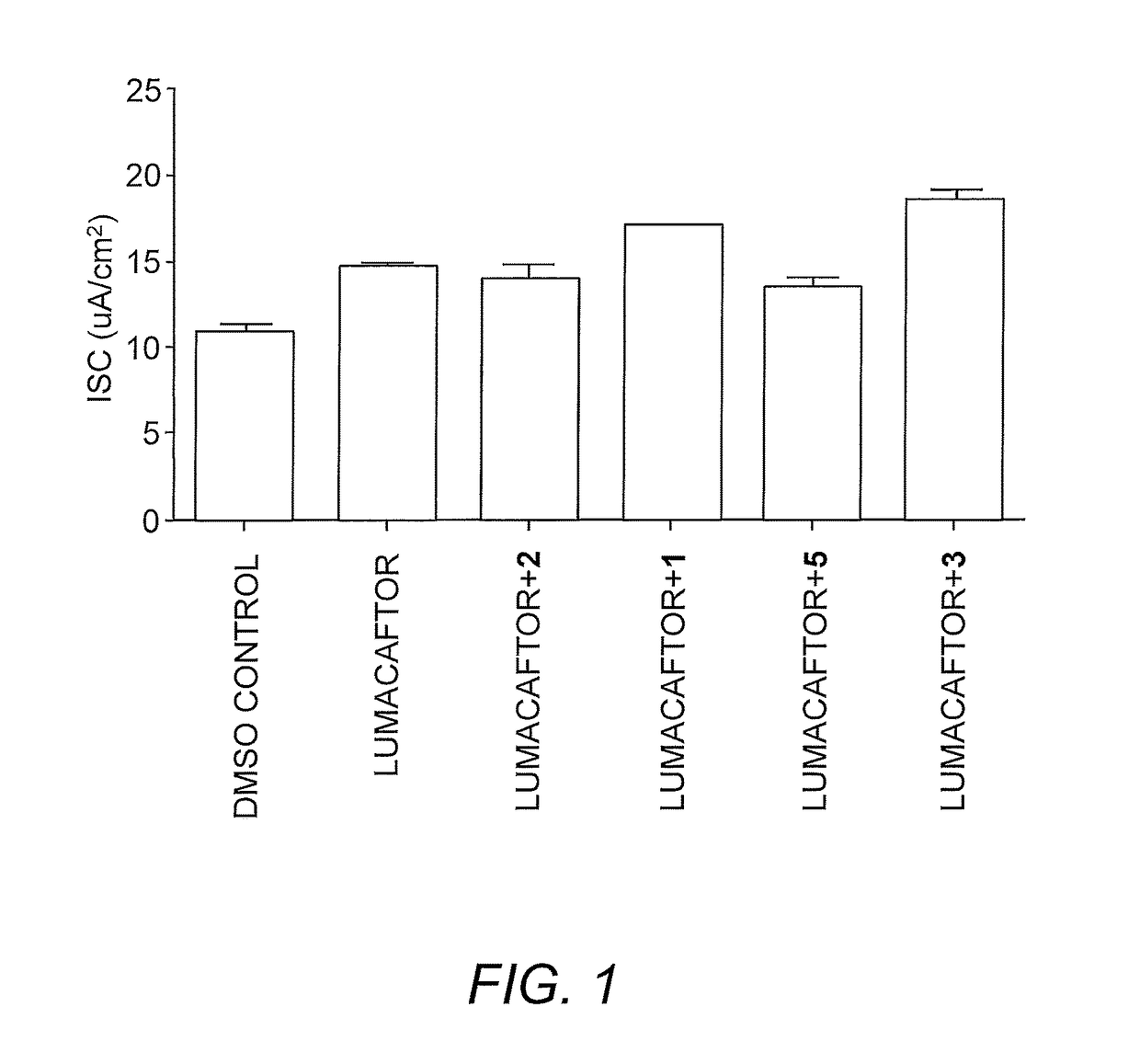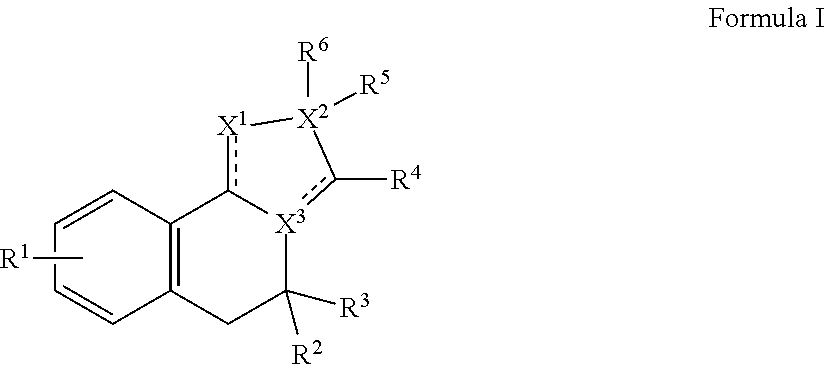Dab2 inhibitors for the prevention and treatment of cystic fibrosis
- Summary
- Abstract
- Description
- Claims
- Application Information
AI Technical Summary
Benefits of technology
Problems solved by technology
Method used
Image
Examples
example 1
Materials and Methods
[0101]Cell Culture. CFBE41o- cells stably expressing wild-type (WT) CFTR or ΔF508 mutant (ΔF508) CFTR under the control of a cytomegalovirus promoter are described in the art (Bebok, et al. (2005) J. Physiol. 569:601-615). Cells were maintained in MEM with 2 mM L-glutamine, 10% fetal bovine serum, 50 U / mL penicillin, 50 μg / mL streptomycin, 2 μg / mL puromycin, and 5 pg / mL plasmocin. Cells were grown at 37° C. in a 5% CO2 incubator. All cells used in experiments were between passages 12 and 28.
[0102]Peptide Synthesis. All peptides were synthesized by Tufts' (Keck) peptide synthesis core facility. F*- and BT-prefixes indicate peptides with N-terminal fluorescein or biotin moiety, respectively.
[0103]Protein Expression and Purification. The DH domain of human Dab2 (UniProt Accession No. P98082-1, residues 33-191) was subcloned by PCR into the pET16b expression vector and expressed in E. coli BL21 (DE3) RIL cells grown overnight at 20° C. in LB medium following inducti...
example 2
Peptide Arrays for Identifying a High Affinity Inhibitor of Dab2-DH
[0117]To design high affinity peptide binders of the Dab2-DH domain and to measure their binding constants, sufficient amounts of the Dab2-DH domain (residues 33-191) were purified. Since room temperature incubation was required at multiple steps of the biochemical analysis, the thermal stability of the Dab2-DH domain was tested using circular dichroism. Apo- and peptide-bound Dab2-DH exhibited melting temperatures (Tm) of 47.1 and 49.1° C., respectively, indicating that experimental room temperature incubations are below the melting temperature of the protein.
[0118]Using the wild-type amyloid precursor protein derived peptide (APP-10: Gln-Asn-Gly-Tyr-Glu-Asn-Pro-Thr-Tyr-Lys (SEQ ID NO:13) as a starting sequence, Dab2-DH amino-acid binding preferences were examined using peptide arrays with single and combinatorial amino-acid substitutions. Since extended peptides have been shown to contribute to binding affinity and...
example 3
Biochemical Analysis of Peptide Binding Affinities
[0123]To verify and quantify the increase in binding affinity, fluorescence polarization (FP) assays were performed to measure the binding constants (Kd) of STA01 and STA02 to Dab2-DH. In the absence of protein, N-terminally fluorescein-labeled STA02 peptides (F*-STA02) exhibited low polarization values, which showed a dose-dependent shift upon incubation with increasing concentrations of Dab2-DH protein. This was indicative of protein:peptide complex formation with larger hydrodynamic radii compared to free F*-STA02. When converted to the related quantity of fluorescence anisotropy and fit to a single-site binding model, F*-STA02 yielded a binding affinity of 63±10 nM. To assess the influence of the fluorescein label on the binding affinity, a competitive displacement FP assay was performed using an unlabeled STA02 peptide. By fitting the data to the algorithm implemented on EXCEL using the SOLVER function, the Ki value for STA02 wa...
PUM
| Property | Measurement | Unit |
|---|---|---|
| Composition | aaaaa | aaaaa |
Abstract
Description
Claims
Application Information
 Login to View More
Login to View More - R&D
- Intellectual Property
- Life Sciences
- Materials
- Tech Scout
- Unparalleled Data Quality
- Higher Quality Content
- 60% Fewer Hallucinations
Browse by: Latest US Patents, China's latest patents, Technical Efficacy Thesaurus, Application Domain, Technology Topic, Popular Technical Reports.
© 2025 PatSnap. All rights reserved.Legal|Privacy policy|Modern Slavery Act Transparency Statement|Sitemap|About US| Contact US: help@patsnap.com



